It’s always exciting to welcome a new entry into recreational aviation. Two Bat Hawks are presently inside the USA and will be debuted at Sun ‘n Fun 2022.
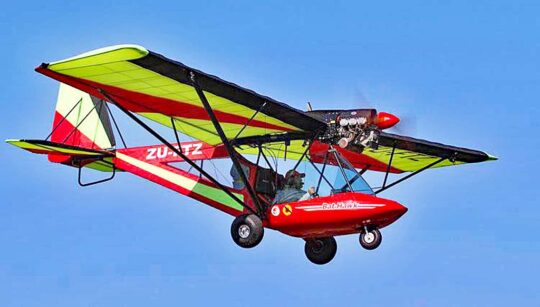 Bat Hawk is a well-established, conventional microlight-style light aircraft powered by a Rotax 912 that helps it provide “sensational” performance.
Bat Hawk is a well-established, conventional microlight-style light aircraft powered by a Rotax 912 that helps it provide “sensational” performance.
LSA with a Purpose
“Like a bat outta…” in this case, South Africa not that hotter place. Kidding aside, Bat Hawk is positioning itself as a very capable workhorse. Their website shows a great many activities for which this aircraft is being used, perhaps most notably, as a workhorse for rhino anti-poaching actions.
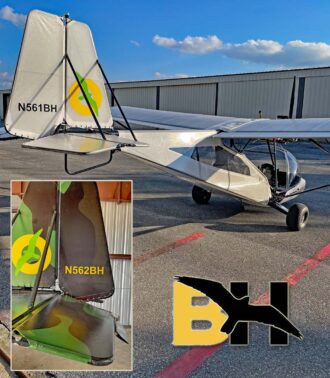
I’m pleased our fun flying aircraft might be pressed into some useful duties. These aircraft are capable and offering manufacturers another potential customer base can help keep them healthy so they keep developing and building recreational aircraft for the majority who simply fly for fun.
What is Bat Hawk?
As the South African describe it, “Bat Hawk is a high-wing monoplane with crew of two seated side by side in an under-slung tubular framed structure surrounded by a glass fiber composite fairing.” Occupants are protected from the elements by “a very large wrap-around windshield.”
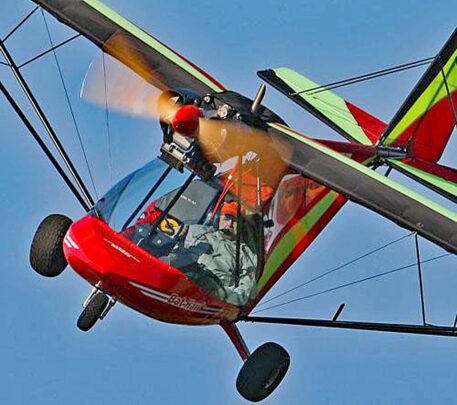
Bat Hawk’s wing is built around two larger aluminum tubes forming the spars, one at the leading edge and one at the rear edge of the wing as is very common of aircraft with this construction. Sewn Dacron sailcloth covers all wing and tail surfaces plus the aft cockpit fairing.
Bat Hawk uses full-span flaperons attached to the rear spar; flaperons work independently as ailerons and together as flaps. There is no flap position indicator but approximate settings can be determined from the flap selector angle. Maximum flap movement is restricted by a limit stop mounted on the flap lever quadrant.
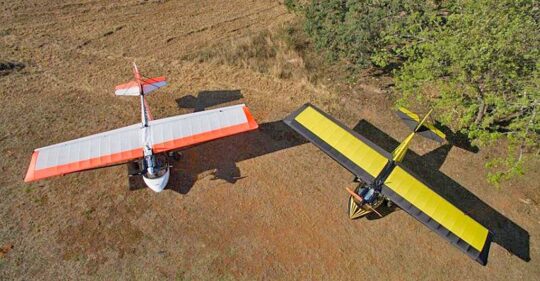
Manufacturer Micro Aviation said a wide track undercarriage has the main wheels supported by an inverted ‘V’ shaped glass fiber that provides suspension. Bat Hawk’s nose wheel is supported by two hydraulic shock absorbers that “allows Bat Hawk to operate on rough terrain.” Black Max disc brakes are actuated using a hand lever on the control stick. Differential braking is not available.
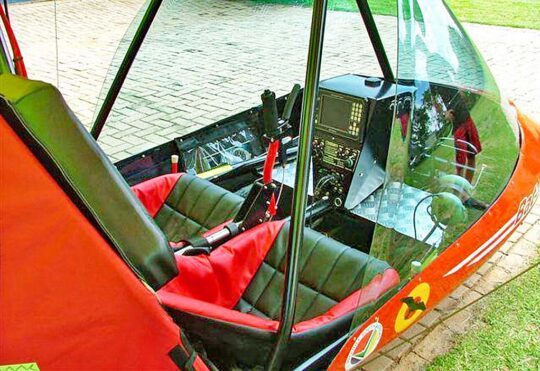
Price? — What will this multi-purpose aircraft set you back? In Experimental Exhibition category for now, the first aircraft is listed for sale at $79,500 plus shipping. Bathawk Aircraft USA is investigating Experimental Amateur Built or Light-Sport Aircraft for the future. More about that as I learn about it.
Bat Hawk
SPECIFICATIONS
All specifications provided by the factory
- Overall length — nose to rudder trailing edge 18.2 feet (5.5 meters)
- Length — propeller to rudder 17.0 feet (5.3 meters)
- Wingspan — 31.2 feet (9.50 meters)
- Height — 10.5 feet (3.20 meters)
- Undercarriage wheel track — 5.4 feet (1.7 meters)
- Main wheel size — 8 x 6 inches
- Nose wheel size — 4 x 4 inches
- Powerplant — Rotax 912 100 horsepower 4-cylinder, 4-stroke
- Maximum weight all-up weight (gross weight) — 1,204 pounds (540 kilograms)
- Typical empty weight with standard equipment — 573 pounds (260 kilograms)
- Maximum fuel — 20.5 gallons / 123 pounds (56 kilograms)
- Minimum solo crew weight — 163 pounds (74 kilograms)
- Payload with full fuel — 508 pounds (231 kilograms)
- Cruise speed — 77 knots
- Stall speed — 36 knots
- Vne — 92 knots
- Take-off run — 100-165 feet (30-50 meters)
- Landing roll — 165-200 feet (50-60 meters
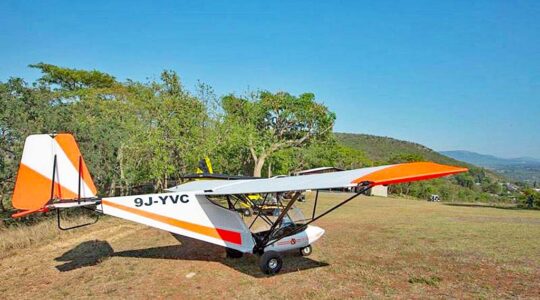
I’ll be looking for Gary and his two Bat Hawks at Sun ‘n Fun 2022. I’ll report more then. Hope to see many of you in Lakeland!


I have flown the Bat Hawk for 2,000 hours with 700 being instruction. I demonstrate a dead stick to my students at the end of their license. It is very easy to to do and gets onto the ground at 35 knots, like flaring a parachute.
Aircraft has absolutely no bad habits and a joy to fly and more so solo.
The real question is; that no one appears to answer; is how many dead stick landings are made in aircraft with Rotax engines? Having now flown for over 50 years and performed dead stick landings at most of my BFRs, I believe I would be comfortable making a dead stick landing in an aircraft with a Rotax engine. But would prefer not to. Why I am a believer in the Continental O-200 and the Lycoming O-235. Yes they are heavier. Magnetos are old school but very reliable; and you can usually tell when they are not running top notch. Magnetos appear to have a predictable replacement at 500 to 1000 hours of run time. The Rotax engines with wires running everywhere look like 1970s auto engines; chaos. I am glad that Rotax is serving the small aircraft market and glad that so many people like the Rotax engine. But reliability is everything in aircraft engines; to avoid dead stick landings. I have looked into the corvair engine conversion for aircraft and it appears safer than a Rotax; and larger and heavier than a Rotax; but everyone to their preferences, thanks.
With an estimated 80% of the market Rotax certainly dominates so, of course, some engine outs have happened. Yet even the FAA repeatedly acknowledges the LSA safety record is “acceptable,“ which is high praise coming from the agency. Nearly all of the aircraft they refer to are Rotax-powered. Nonetheless, it’s great that pilots have several engine choices so they can have what they want.
Having flown for over 20,000 hours on Rotax 912 engines, in a recreational and training environment, on wheels and floats – and worked on Rotax 912 engines since they were introduced to the market — I would have to say your hypothesis is out to lunch!
The two engine outs during all that time were due to pilot error or improper engine installation.
My original Lil Buzzard two seat trainer was first flown in 1990 with a 912 80 horsepower engine. We put two engines on it in 4,500 hours! Not because we had to – but because of their good resale value as used engines.
That aircraft is still flying today on an engine that had 2,200 hours without a failure when I sold it 10 years ago.
Dave Loveman
If you go on a flight test Dan, I’d be curious to know how dominant the rudder is.
Hi Courtney,
As a South African owner of this lovely little aircraft and having done 14 years of flying in them with a good number of dead stick landings as well as I took part in Landing Competitions, the rudder is dominant enough that you need a good enough right foot to counter the torque on take off. Has and can catch you off guard. Also it certainly plays its role enough as any 3 axis on landings under no wind and cross wind landings. It works beautiful enough at safe altitude if you want to do stall turns.
At Almost $80,000 USD, it’s way over Priced for a Tube & Fabric Aircraft! Take off the $20,585.00 cost of the 912 ULS – 100hp Engine.
[This comment was edited to remove information appearing in the article.]
MOTW — 1,204 lbs = 546.1252 kg / 10 kg = 54.61252 kw is needed to Fly Well = 40.72455 (41hp)!
Smaller, Lighter Engines that could be used.
380HO = 52hp
447 = 40-62hp
F23 = 50hp+
503UL = 50-70hp
462UL = 52-66hp
532UL = 64-74hp
582UL = 65-82hp
618UL = 73.4-88hp
Honda/Clone Singles and V Twins.
Typical empty weight with standard equipment — 573 pounds. 1204 lbs – 573 lbs = 631 lbs Usefull Load. Minus 20.5 Gallons = 123 lbs. 631 lbs – 123 lbs = 508 lbs/2= 254 lbs each for Pilot & Passenger.
Rotax 912 Total firewall forward, minus cowling = 194.69 lbs
So 573 lbs – 194.69 lbs = 378.31 lbs for Airframe.
ROTAX 582 UL Engine – 65hp = $5,785.00 FWF Install total about $8,000.
ROTAX 912 UL Engine – 80hp = $17,258.00
Rotax Rick 670 Engine – 92hp = $?,??? faircopters@aol.com (239) 777-0894 (Cell)
ROTAX 912 ULS Engine – 100hp = $20,585.00
ROTAX 912iS Sport Engine – 100hp = $23,754.00
ROTAX 914 UL Engine – 115hp = $33,737.00
ROTAX 915iS Engine – 140hp = $40,353.00
Nice looking plane, but at $80,000, they’ll be competing with a lot of planes that are much faster. I suppose this plane will have to find that agricultural niche.
Another ‘imitator’ of the FlightStar/Phantom/XAir planform…and there’s certainly nothing wrong with going that route. Having enough “beef” in the airframe to use the 912 is certainly a plus. Price wise… not too far out of line, but low sales volume I’m sure.
Looks a bit like a Ikarus C22 clone.
Almost $80,000 USD is quite a price tag for such a microlight.
Don’t forget to add state tax and about $7,000 shipping plus port fees, etc.
Is just me or is this a Quicksilver / M-Squared clone/derivative? …with a fat tail boom.
Most significant difference between the M-Squared is the engine mount. One a pusher, one a tractor.
Thx for pointing that out
Does that have any impact on performance or usefulness?
Hi Kenneth
Im a South African owner of 14 years flying this machine. And many years ago went up in a Quicksilver…there is almost no comparison and the Bathawk is truly vastly superior with full 3 axis capability that even Airline Pilots I took on Test Flights were amazed at. Here in South Africa among other functions we fly them ( I have on numerous occasions) for Wildlife Patrols, Anti Poaching Flights, Ecological Surveys, Anti Crime Patrols and af 1000 AGL and flying safley above tree top level for even Photographic Flights, its a Magic Machine that does the job and is a pure joy to fly! Go for a Test Flight…I dare you!